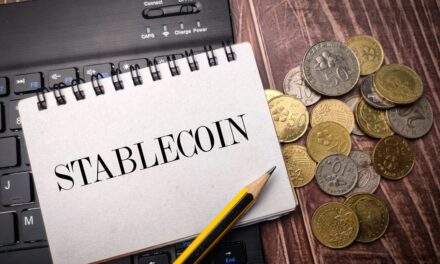This bag of gold is so heavy.
Day by day, it becomes more treacherous to get to the market in Istanbul.
I told my wife, Asel, I’d be back before the sun went down. She wanted me to visit the shoemaker before I returned…
But these scarves are so beautiful… maybe I should get one.

As I approach the trader’s stall, my back groans from the weight of gold and silver in my sack…
I reach into my sand-crusted sack, noting the trader’s eyes while watching over my shoulder for any thieves…
What is a merchant to do?
When you look through the eyes of a 17th-century merchant, a visit to the market could be your last.
It was the era of “commodity money” and that meant that the value of money you carried was determined by its weight in gold or silver.
You could imagine it was dangerous to store and carry loads of heavy gold and silver coins around back then.
The solution: deposit your gold and silver coins with a goldsmith to keep them safe. The goldsmith would then issue a “promissory note,” or promise to pay you back for the amount deposited.
Voila! This new innovation in paper currency allowed merchants to travel and spend their wealth without having to lug around gold coins.
Goldsmiths eventually became banks when they started lending out their deposits to borrowers at higher rates.
But banks are no longer the issuers of paper currency.
In the last three centuries, governments invented the central bank to become the sole issuer of “promissory notes,” which we now call fiat currency.
The shift from gold and silver as money to paper currency marked the biggest financial shift of the past 400 years.
Today’s information revolution is poised to bring another epochal shift in money.
And this space is poised for 16.6X growth by 2028!
Petrodollar’s End?
From Nicaragua to Pakistan, Vietnam to Egypt, I’ve never found a merchant that won’t accept a $20 bill as payment.
I like to think Andrew Jackson’s face is the most recognized human in the history of the world.
Sure, you might not get the best exchange rate when buying a dozen scarves in an Istanbul bazaar, but the merchant will gladly accept your U.S. currency.
That’s because the dollar is the global reserve. After the U.S. and our allies defeated the Germans in World War II, the U.S. dollar anchored the Bretton Woods system.
We guaranteed that other central banks could trade their U.S. dollar reserves at a fixed rate for gold.
This scheme ended when Nixon suspended the dollar’s convertibility to gold in 1971.
However, a new monetary system emerged that maintained the dollar’s reserve status: the petrodollar.
Petrodollars are not a new currency. They are simply U.S. dollars paid to an oil-exporting country. In the petrodollar system, the U.S. struck a deal with Saudi Arabia to funnel dollars paid for oil back into U.S. Treasurys.
This benefited the U.S. greatly. The demand for dollars (and U.S. Treasurys) helped keep rates low.
It also created a system where energy-exporting nations created sovereign wealth funds to invest in U.S. assets.
However, the age of the petrodollar might be coming to an end for two main reasons:
- The U.S. share of world GDP is down from 40% in 1960 to 25% today.
- The shale revolution means we buy far less Saudi oil. China is now the largest buyer of Saudi oil.
There’s been a growing fear that the end of the petrodollar means an end to dollar hegemony and chaos in our financial markets.
However, just as gold convertibility passed the torch to the petrodollar, there is another development that will solidify the dollar’s future dominance.
The Rise of the Stablecoin
In order to become a dominant form of currency, the dollar needs to evolve into a new digital format.
The world of crypto enables this transformation with something called a stablecoin.
These are cryptocurrencies that provide stability in the otherwise volatile world of crypto, where prices can swing up and down wildly in a single day.
For example, the most well-known crypto, bitcoin, can swing more than 10% in a few hours.
Stablecoins overcome this by being pegged or tied to a commodity or currency.
In this case, they are pegged to the U.S. dollar. So, at any given time, a U.S. dollar-based stablecoin will always be worth $1.
There are a few different ways the value of these stablecoins is tied to the dollar, but essentially, they follow the same logic as central banks.
One method is similar to the old gold standard that the Federal Reserve used to use, where gold was locked up in secure places that backed the value of the U.S. dollar.
In this case, it’s either U.S. dollars in cash, treasury securities or some other type of investments locked up in a secure place that backs and maintains the $1 exchange rate of a stablecoin.
The other method is similar to what central banks do today. They don’t rely on a reserve asset to keep the value of the dollar they issue.
Instead, they make interest rate decisions that control the supply of money in the economy, ultimately maintaining the value and buying power of a dollar.
In the world of crypto, it’s not Fed policymakers — it’s computer-based algorithms that control the supply of the stablecoin to ensure that it’s always worth $1.
My crypto readers might remember we identified LUNA as the backer of an algorithmic stablecoin, TerraUSD. Readers were able to grab gains of 18,000% in just a year’s time on this one!
However, the algorithmic stablecoin has not quite worked yet and the market for dollar-based stablecoins is dominated by private companies.
A few well-known examples include USDC issued by Circle, USDT issued by Tether and PYUSD issued by PayPal.

Demand for stablecoins is on the rise and the collective market cap of all stablecoins hit a new all-time high of $168.45 billion, surpassing the previous record set in 2022.

But this is still an early market because we haven’t yet seen a big country like the U.S. enter this space with a government-issued stablecoin.
The U.S. has been mulling over this idea and studying it for a long time but hasn’t taken concrete action yet — that may be about to change.
Last week, the promise of rate cuts in September wasn’t the only thing to come out of Jackson Hole, Wyoming.
There was also a Blockchain Symposium happening in Jackson Hole at which Wyoming Governor Mark Gordon announced the state’s new initiative to create its own U.S. dollar-backed stablecoin, the Wyoming stable token.
Wyoming plans to debut this new stablecoin in early 2025 to give individuals and businesses a faster and cheaper way to transact with each other.
This stablecoin will utilize the asset-backed model discussed earlier, in which the state backs the value of the stablecoin by holding short-term Treasurys.
It’s still early days for this project because Wyoming is still in the process of finding partners in the crypto world who will allow them to issue this stablecoin on a blockchain.
But the broader vision is that this bold step into the future by this enterprising state will help lawmakers in D.C. push past their roadblocks and issue a stablecoin at the federal level.
Its potential moves like this in the near future will make the stablecoin market a promising one.
Analysts at Bernstein Research expect the stablecoin market to surge exponentially from its current market cap of $168 billion to $2.8 trillion by 2028!
And this future becomes inevitable when you look at the way the world is trending.
It is no longer practical to carry around a sack of gold to transact with, and in an increasingly digital economy, it will soon be impractical to carry anything but a digital dollar.
Until next time,

Ian King
Editor, Strategic Fortunes










So How do we invest in stable coin?
Try researching ” GoldBacks “. Local corrency issued by several states. 1/1000th of an ounce of gold imbedded into a secure note. Not legal tender but real money. ie. Ayn Rand ” Gold is money, all else is a promise to pay .” credit